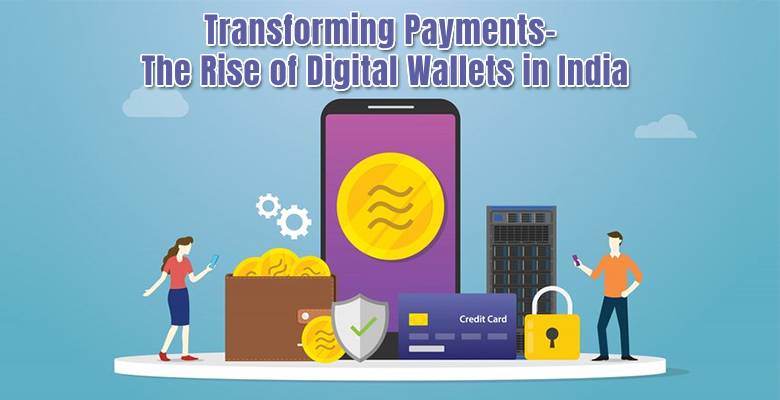
The digital payments landscape in India has evolved dramatically, largely due to the rise of digital wallets, supportive government policies, and shifting consumer preferences. Enabled by new technology, digital wallets have become an essential part of India’s financial ecosystem. Here’s an in-depth look at the trends, statistics, and outlook for digital wallet use in India.
Trends in the Rise of Digital Wallets Adoption and Usage
- UPI Integration and Growth
The Unified Payments Interface (UPI), launched in 2016, has been instrumental in the growth of digital wallets, handling billions of transactions every year. In recent fiscal years, UPI recorded significant transaction volume and value, covering payments across both urban and rural sectors. As a robust and reliable digital payment method, UPI now represents more than half of all digital payments in the country and is expected to continue expanding with new applications like international remittances. Platforms like Amazon Pay, Google Pay, and more offer UPI features and you can use the same to make the payments.
- Rise in Mobile Wallet Transactions
Mobile wallet payments in India have grown at an impressive rate, with the total transaction value reaching several trillion rupees in recent years. This growth trajectory is expected to continue with an annual increase projected over the next several years, likely making mobile wallets even more prevalent than traditional payment options like cash and cards. Such growth underscores the central role digital wallets are expected to play in the nation’s economic transactions.
- Market Leaders Driving Growth
Leading platforms such as Paytm, Google Pay, and PhonePe are at the forefront of this movement. These apps have not only become the primary payment method for many Indians but have also expanded their offerings to include services like stock trading, insurance, and e-commerce. Together, these three giants are predicted to account for a substantial portion of India’s trillion-dollar digital payments market in the coming years.
Consumer Payment Preferences
- Increased Demand for Contactless Payments
With the impact of the COVID-19 pandemic, there has been a significant shift toward contactless payments, particularly among younger demographics and those in urban areas. Digital wallet features like QR code payments and integration with online shopping platforms have driven widespread adoption, offering both convenience and safety.
- Everyday Applications
Digital wallets have gained popularity beyond online transactions. Many consumers use digital wallets for daily transactions at grocery stores, with street vendors, and for bill payments. The ease and speed of these transactions make digital wallets a preferred payment option for many.
- Popularity of ‘Pay Later’ Options
Interest-free “pay later” features offered by digital wallets are becoming a common choice among young adults who prefer flexibility in managing their finances. These payment options offer short-term credit without interest, adding to the appeal of digital wallets for routine purchases.
Key Drivers Regulations and Technology
- Government and Regulatory Support
The Indian government has actively promoted digital payments through initiatives like Digital India and the digital rupee pilot program by the Reserve Bank of India. These initiatives aim to build a digitally inclusive economy by supporting digital wallet and UPI adoption across all regions of India.
- Security Enhancements and Innovation
Digital wallet providers are investing in biometric authentication, tokenization, and advanced fraud detection measures to ensure that transactions are secure. These efforts have helped build consumer trust, which is critical for the continued adoption of digital payments.
- Expanding Global Reach
Recently, digital wallets have gained international capabilities, allowing for seamless international remittances and interoperability with global payment platforms. This not only increases the functionality of digital wallets but also makes them attractive for cross-border transactions.
Challenges and Future Prospects
- Ongoing Challenges
While digital wallets are growing rapidly, challenges such as cybersecurity risks, low financial literacy, and inconsistent internet access in rural areas remain. Addressing these issues will be essential for ensuring equitable access to digital financial services across the country.
- Promising Outlook
Digital wallets are expected to dominate India’s payment ecosystem. This will be done because of continuous innovation and regulatory support. Projections suggest that India could soon emerge as one of the largest digital payment markets globally, thanks to its strong digital infrastructure and consumer demand.
Our Final Words
The rise of digital wallets has gone beyond being a mere payment option—they represent a fundamental change in the way financial transactions are conducted in India. Their rapid adoption, coupled with evolving consumer preferences and technological advancements, highlights a promising future for India’s digital economy.
